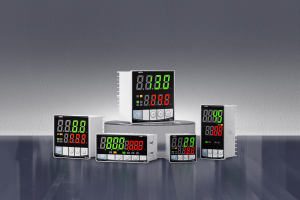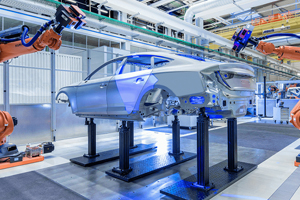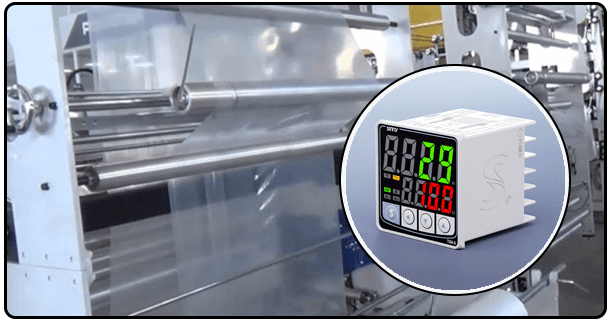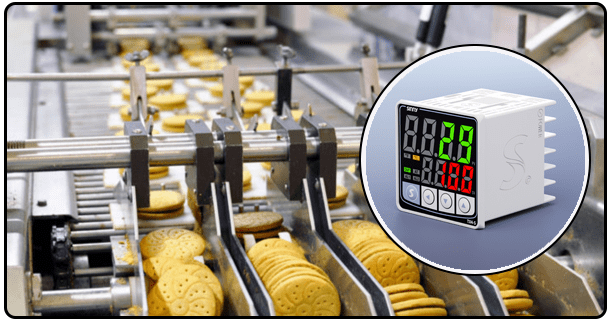Understand Precise Thermal Regulating with Small PID Temperature Controls
1. Introduction
Temperature regulation is essential for a wide range of applications. These include everything from laboratory experiments and household appliances to industrial processes on a large scale. The article explores small PID controllers in detail. This article will explore the fundamental principles behind PID controls, examine their components, explain their operation mechanism, review their various applications and highlight their advantages. We want to give readers a comprehensive understanding of these powerful yet compact devices.
2. What is PID Control (Programmable Integrated Device Control)?
PID is a widely used and robust method of regulating the processes in a system. PID is an acronym for Proportional Integral and Derivative, three control actions which work together to reduce the difference between the desired setpoint, or temperature, and the actual variable. It is important to understand these components in order to fully appreciate how the PID temperature control works.
Proportional Control(P):This action produces a control signal that is directly proportional the error, the difference between set and measured temperatures. A larger error results in a stronger control signal. Its primary purpose is to give a rapid initial response that will bring the variable in the process closer to its setpoint. Although purely proportional controls are often prone to a steady state error that can cause the temperature not to match exactly the setpoint, they do have their place.
Integral (I) Control: This integral term is used to address the error at steady state inherent to proportional control. The integral term calculates the sum over all past errors and produces a control result that is proportional. The integral term adjusts outputs continuously to remove the error if it persists over a certain period of time. This ensures long-term accuracy. The component is important in reaching the desired setpoint, but if it's not properly tuned, can cause instability and slow the response.
Derived Control (D), The term is based on the rate at which the error changes. The current deviation of the temperature from the setpoint is used to predict future errors. Derived control dampens oscillations by adjusting to the slope error. It also prevents overshooting and undershooting of setpoint. This improves system stability and response time, especially in systems that are prone to sudden changes.
PID controllers are superior to simple on/off methods of temperature control that simply switch on or off heating and cooling elements.
3. Parts of the Small PID Thermostat Controller
Despite its small size, the PID controller is composed of several components that work together. The typical components are:
Thermostat: It is responsible for measuring temperature in the controlled environment. Thermocouples are commonly used to produce a voltage that is proportional with temperature.
Control Unit: The brains of any operation. Modern small controllers are often microcontrollers - small computers on integrated circuits - that can process input signals from sensors, execute the PID algorithms, and generate appropriate output signals. The controller calculates total output and determines proportional, integral and derivative terms. It then sends commands for the actuator. There are dedicated PID Integrated Circuits that simplify the implementation of this control algorithm.
Actuator An actuator is a component which physically adjusts the system's temperature. It could be a resistive heater that boosts power to increase the temperature. In cooling systems, the device could be either a Peltier (thermoelectric cooler) or compressor. A signal is sent by the controller (often voltage or current) to instruct the actuator how much heat or cooling to apply.
Interface User: This interface allows users to interact with controllers. The controller usually has a screen that shows the temperature and setpoint.
4. What is a PID temperature controller?
A small PID controller operates in a continuous, cyclical manner:
Definition of Setpoint: First, the user establishes desired temperature (the setpoint) using the user interface. The controller will aim to keep this temperature.
Measurement of Temperature: A temperature sensor constantly monitors actual temperatures within the controlled environment. This physical temperature is converted into an electric signal (voltage, current), which is proportional with the temperature.
Calculate Error: Receives signal from sensor, compares to setpoint. This error is determined by the difference between the temperature setpoint and what is actually measured.
Calculation of PID: To calculate the PID, the controller uses the algorithm. The controller calculates the contributions of the Proportional Integral and Derivative Terms based on current error, history of errors for the integral term, and rate of change in the error (for derivative terms).
Generation of the output signal: Each term's contribution is added to create a control output. The output signal is usually a command, which can range from a minimal to maximum value. It indicates how much cooling or heating action is needed.
Control of Actuator: This output signal is sent by the controller to the actuator. If the output signal calculated indicates that heating is needed, then the controller will increase the power to the heater. If cooling is required, the controller may activate a compressor or fan.
Feedback loop: Modifies system temperature by the actuator. This process is repeated from Step 2. The closed-loop control system constantly monitors and calculates to maintain temperature close to setpoint.
5. Design considerations for small PID temperature controllers
To ensure the best performance, it is important to carefully consider several factors when designing or choosing a PID small temperature controller.
Dimensions and form factor: Although "small" can be a relative word, these controllers tend to be compact. They are often made for small spaces, or designed to integrate into existing equipment. The size and form factor of the controllers are important. They must be compact, but also functional.
Power consumption: Efficiencies are important in applications that use batteries or when power is needed to be reduced.
Integration With Other Systems: Many small controllers need to interact with other systems or devices. It could be digital communication protocols like RS-485 or Modbus for connecting with computers or supervisory system, or analog outputs such as 0-10V and 4-20mA for control compatible indicators or actuators.
Safety Features Safety features are paramount when it comes to temperature control in laboratories or industrial settings. Safety features such as alarms for overheating, automatic shut-down, temperature limiters and fail-safe modes can protect equipment and personnel.
6. Application of small PID temperature controllers
Small PID controllers are versatile and precise, making them ideal for many different applications in a wide range of industries.
Industrial and Laboratory Equipment: These devices are essential in laboratories and industrial environments, such as incubators and ovens.
HVAC System: Larger central HVAC systems use PID controls. However, PID controllers of smaller size can also be used to control specific units for heating and cooling, or manage heat exchangers with greater precision.
Consumer Electronics The internal temperature control of devices such as computers, servers and consumer electronic is essential for their performance and durability.
Projects for DIYers and Hobbyists: Small PID controllers are a great option for hobbyists who want to build projects that require temperature control. Examples include 3D printers, electronics, and reptile tanks.
7. The advantages of small PID temperature controllers
Small Size and Versatility With the right sensor and actuator, they are able to be used in a variety of environments and processes.
8.Selecting a small PID temperature controller
When selecting the best small PID controller, it is important to consider specific needs. Buyers should consider the following criteria.
Accuracy and Temperature Range: Make sure the controller is able to operate within required temperature limits, and can achieve the measurement accuracy needed for the application.
Sensor compatibility: Check that the controller will accept the temperature sensor you need (e.g. specific RTD or thermocouple types).
Control of actuators: Verify that the controller is able to drive the desired type and power levels (heating elements, fans, etc.). Use as intended.
Communication Interfaces: Take into consideration the communication interfaces required for connecting to computers or other systems.
Features Search for features such as setpoint holding, alarm outputs and possibly programmable loop control.
Support and Brand Reputation: Select reputable brands known for their quality customer service, technical support and warranty coverage. You can gain valuable insight by reading reviews or case studies of other users.
Understanding common troubleshooting methods and performing proper maintenance can ensure reliable performance of the small PID controller.
Solutions to Common Problems:
If you get inaccurate temperature readings, check the sensor's connection. Make sure it is clean, calibrated properly, and that the sensor setting on the controller has been set correctly.
If the actuator is not responding, inspect the wiring, power supply, and controller output settings to ensure that the actuator operates within its operational range.
Overshooting and oscillation: These are often signs of improper tuning. To achieve stable control, adjust the gains for proportional integral and derivative (Kp Ki Kd).
If alarms are triggered frequently, investigate the reason for the alarm. (e.g. actual temperature overshoot, sensor failure or tuning issue) rather than simply resetting the device.
Components should be kept clean: Make sure that sensors are not contaminated with dust. This could cause readings to change.
Examine connections periodically for wear and looseness.
To maintain accuracy, follow the calibration guidelines provided by your manufacturer.
Safety precautions: Follow safety instructions when handling electrical components, heaters, or cooling devices. Before performing any maintenance, ensure that the heating element is properly ventilated and turn off power.
9. Conclusion
The small PID controllers are a highly sophisticated solution that is accessible for temperature control in many applications. The PID algorithm is used to implement the controllers and sensors in a closed feedback loop. This results in accurate, responsive and stable control. These devices are compact, but offer many advantages, including performance, ease of operation, and cost effectiveness. It is important to understand their operation and application in order to make an informed choice and get the most out of them. We can expect to see these control devices get smaller, more energy efficient, and have smarter connectivity as technology progresses. The reliability and accuracy of temperature control offered by PID controllers are fundamental for the safety and success of many processes.























